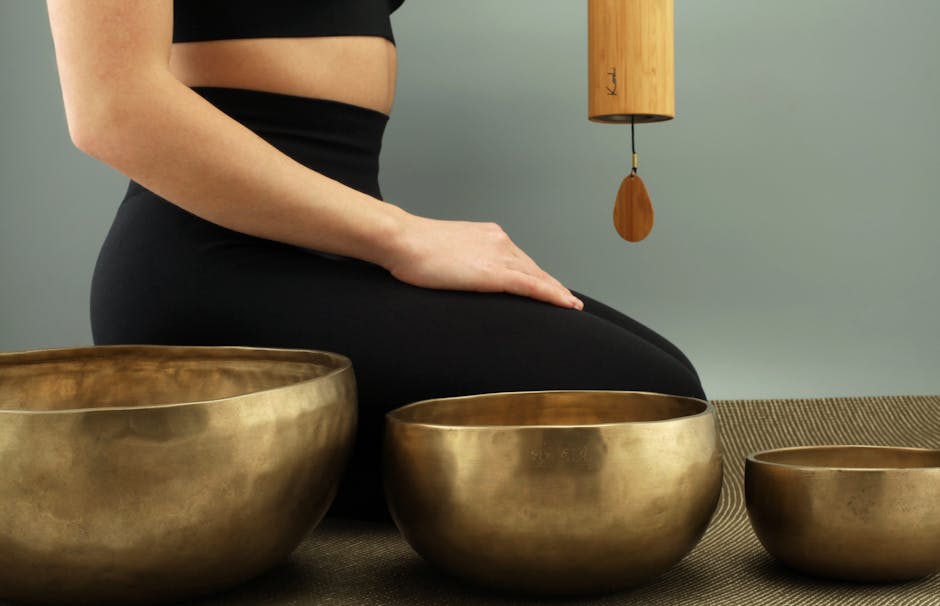Experience Embodied Mindfulness: Move with Conscious Awareness
In our fast-paced lives where distractions abound, the practice of embodied mindfulness can radically transform the mundane into the extraordinary. Imagine savoring every moment, whether you’re walking to work, washing the dishes, or sitting down for a meal. The interplay of movement and conscious awareness allows us to reconnect with ourselves, elevate our state of being, and discover profound spiritual wellness within our daily actions. Let's embark on this journey into "Embodied Mindfulness: The Interplay of Movement and Conscious Awareness in Everyday Actions," exploring the multiple dimensions it offers.
What is Embodied Mindfulness?

Embodied mindfulness integrates the principles of mindfulness with physical movement, asking us to pay attention to how our bodies feel while moving through the world. This practice goes beyond sticking to a yoga mat or meditation cushion. It’s about merging our physical experiences with our mental states, turning any daily activity into a mindful practice. When we are fully aware of our movements, we not only enhance our well-being but also cultivate a deeper connection to our innate wisdom.
As demonstrated in studies, mindfulness can foster emotional regulation and improve stress resilience, making it essential for personal transformation. In the words of Jon Kabat-Zinn, the father of modern mindfulness, “Mindfulness is awareness that arises through paying attention, on purpose, in the present moment, and non-judgmentally.” It is a powerful tool to harness every moment, even in our everyday actions.
The Science Behind Mindfulness and Movement

Understanding the science of mindfulness underscores its benefits. Research from Harvard Medical School highlights that mindfulness practices increase gray matter density in the brain, specifically in areas responsible for emotional regulation and self-awareness. This neuroplasticity allows us to retrain our brains and alter our responses to stressors.
What’s captivating about this practice is that it doesn’t require changing our physical environment. Instead, we can incorporate mindful awareness into every action. From breathwork to simple stretches, movements become opportunities for growth. For more insights on how mindfulness transforms brain activity, visit this article.
Everyday Movements as Mindfulness Practices

Many assume that mindfulness is limited to sitting in silence, but it can flourish in active engagements. Here are some ways to infuse mindfulness into daily movements:
-
Walking Meditation: Instead of rushing to your destination, practice a mindful walking meditation. Feel each foot leave the ground and notice sensations in your body. Pay attention to the sounds around you. This practice aligns seamlessly with moving through different environments, reminding us to be present, no matter where we go.
-
Mindful Eating: Transform meal times into a rich experience by savoring each bite. Engage your senses to note the textures, flavors, and aromas. This mindful approach can reduce overeating and enhance your appreciation for food.
-
Washing Dishes: Rather than viewing dishwashing as a chore, it can become a meditative ritual. Focus on the warmth of the water, the soap's scent, and the rhythm of your hands in the task. This simple shift fosters serenity in a routine activity.
Movement and Meditation—An Intrinsic Connection
At its core, embodied mindfulness celebrates the relationship between meditation and movement. Practices like yoga, tai chi, and dance offer synchronization of body, mind, and spirit, enhancing both physical health and spiritual awareness.
Yoga is particularly effective as it integrates breathwork with physical postures, inviting practitioners to connect deeply with their inner selves. Many people find that the fluidity of yoga allows them to dissolve mental blocks and facilitate emotional healing.
Consider the concept of harmonic resonance, where the frequencies of our movements align with the nature around us. Such practices propel us toward greater self-acceptance and alignment with the universe's rhythms.
The Role of Breath in Embodied Mindfulness
When engaging in embodied mindfulness, the breath serves as a powerful anchor. Breath control techniques, or pranayama, not only enhance physical capacity but also facilitate emotional release.
Awareness of breath is at the heart of various meditation practices, acting as a pathway to connect with deeper aspects of self. Techniques such as panoramic breathing allow us to fully experience our internal landscape. This technique encourages us to experience our breath in expansive ways that brighten our emotional state and enhance oxygenation.
Transforming Stress into Awareness
In the face of stress, our natural reaction is often to tense up or withdraw. Embodied mindfulness invites us to recognize stress as a natural part of life but provides tools for transformation. By intentionally focusing on our body’s sensations and breath, we can turn moments of discomfort into spaces for growth.
Adopting the awareness of our physical sensations while remaining anchored in the present moment helps mitigate overwhelm. Strategies do not stop here; exploring opportunities to release stress through breath-based practices enables emotional freedom, setting the stage for healing and clarity.
Engaging the Senses
Embodied mindfulness extends beyond the internal realm into external senses. Engaging with our surroundings can deepen our connection to the immediate environment and enhance wellness:
-
Sight: Observe the colors and shapes around you. View nature or your living space with a fresh perspective, noticing how light reflects upon surfaces, or how seasonality shifts the landscape.
-
Sound: Tune into sounds that surround you. Instead of merely hearing them, listen actively with intention. This can lead to a more profound appreciation of sound as a moving experience, much like the insights shared in this exploration of sound healing.
-
Touch: Engage your sense of touch actively. Whether feeling the texture of clothing or the ground beneath your feet, introducing tactile awareness enriches present moment experiences.
Nature's Influence on Embodied Mindfulness
Bringing elements of nature into everyday actions conjures a profound connection to the universe. Nature has a unique ability to ground us, reminding us of our intrinsic link to the earth. Practices such as forest bathing tap into this power, inviting us to observe and interact with the natural world intentionally. Research showcases that nature fundamentally reduces stress and enhances overall well-being, making it an essential aspect of embodied mindfulness.
You might be curious about how to explore nature-based rituals to connect more deeply with your spiritual journey. Grounding ourselves in nature not only invites peace but also encourages a rhythm of life that honors the cycles of growth, decay, and renewal.
Integrating Creativity into Movement
Creative expression places another layer on embodied mindfulness. From dancing to painting, engaging with the arts offers an outlet for emotions, urging us to express what lies beneath the surface. Using movement to paint or dance invokes emotional release and allows clarity to arise.
Consider the connection between creativity and meditation in using the creative arts for exploration. Creativity can emerge as a bridge to self-discovery and transformation, prompting insights about our deepest fears and desires.
Building a Mindfulness Routine
Creating a personal practice cultivates a sense of discipline and resilience. Here are some practical steps to guide you in building a mindful routine that encompasses embodied mindfulness:
-
Start Small: Select simple actions to incorporate mindfulness gradually into your day. Whether it's mindful breathing or incorporating yoga into your morning routine, consistency matters more than complexity.
-
Bind Movement with Intention: Infuse every action with purpose by being present in the moment. This could mean mindfully preparing a meal or engaging in productive work tasks with clear awareness.
-
Create a Sanctuary: Designate a space within your home for mindfulness practices. Make it a calming environment with elements that resonate with your spirit.
-
Utilize Resources: Explore various materials and resources that guide you in deepening your practice, such as yoga guides or mindfulness apps that facilitate routine integration.
The Collective Aspect of Mindfulness
Embodied mindfulness isn't just a solitary endeavor; it thrives in community. Find spaces rich with shared energy, whether in yoga classes, meditation gatherings, or nature retreats. These communal experiences foster connections, enabling growth through shared wisdom.
Embracing the Journey
Embodied mindfulness is a continuous journey rather than a destination. With each breath and movement, we evolve, shedding old patterns while cultivating awareness in our daily existence. Celebrate every victory, no matter how small, as each moment contributes to an expansive awakening of consciousness.
Final Thoughts
Embodied mindfulness encourages us to look beyond traditional meditation practices, inviting resonance in every moment of our lives. By becoming aware of our movements and breathing, we discover a deeper essence of being that honors our spirit and the world around us.
Embrace the collective practices of yoga, meditation, and mindful living, and witness the transformation unfold. As you navigate your daily actions, may every step, breath, and moment resonate with purpose.
For deeper insights into the realms of mindfulness, explore breath sculpting practices that can enhance your experience. Dive into this journey with heart, curiosity, and a spirit eager for connection.



